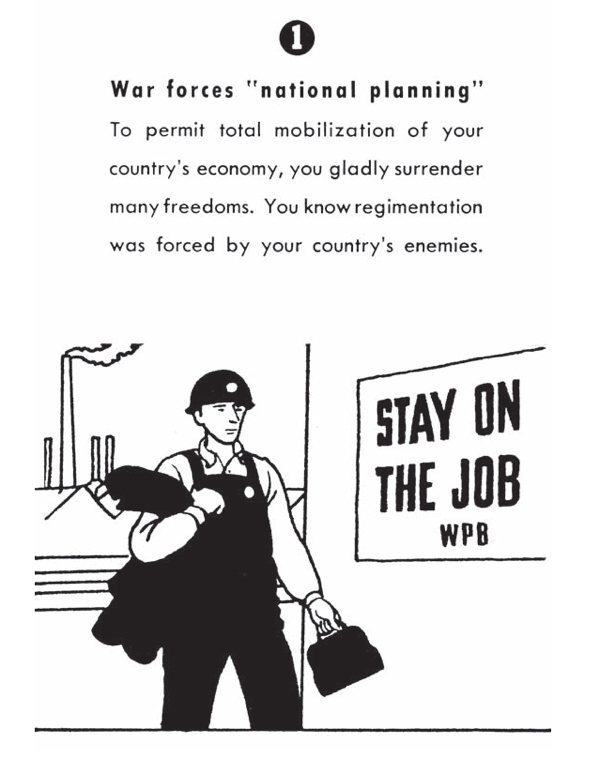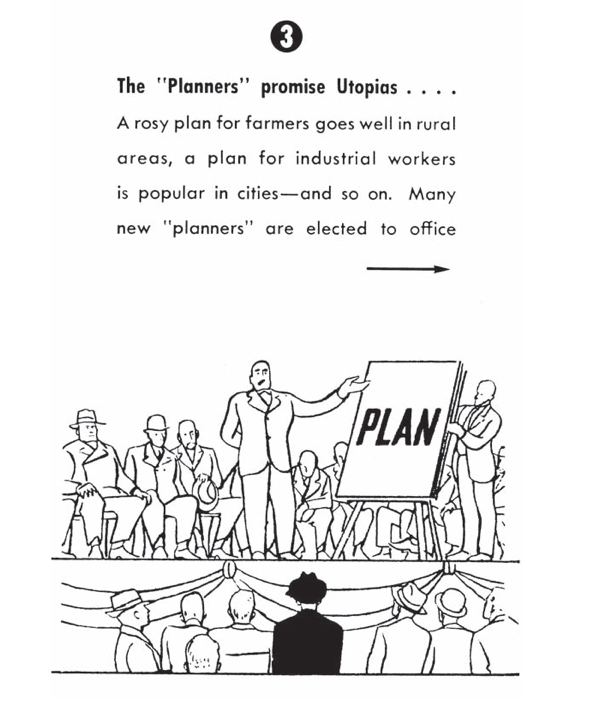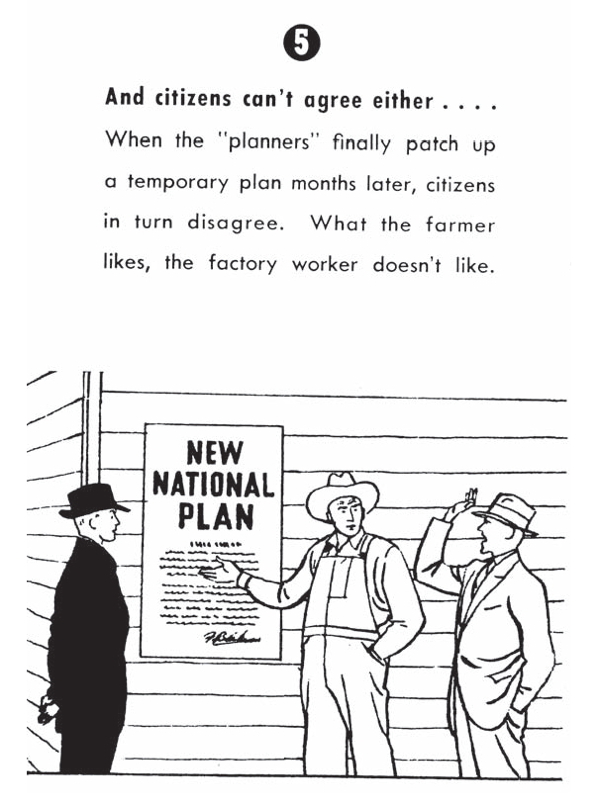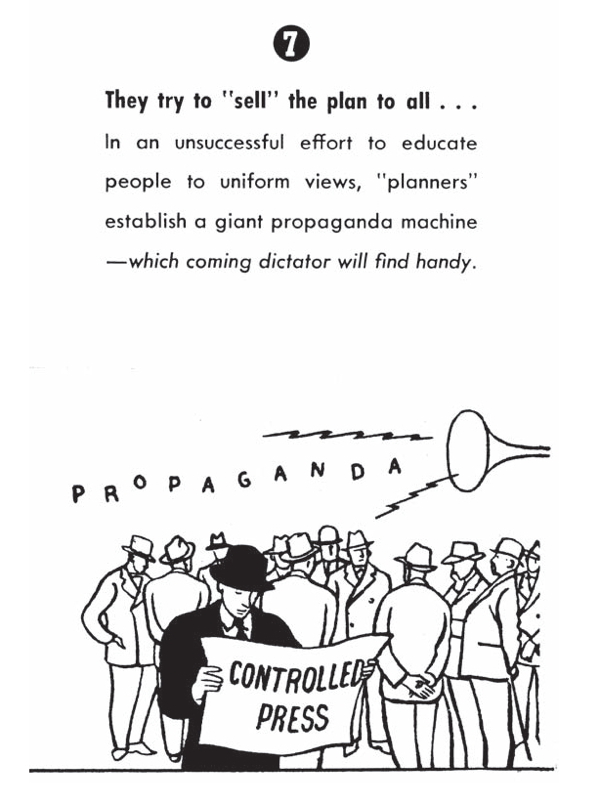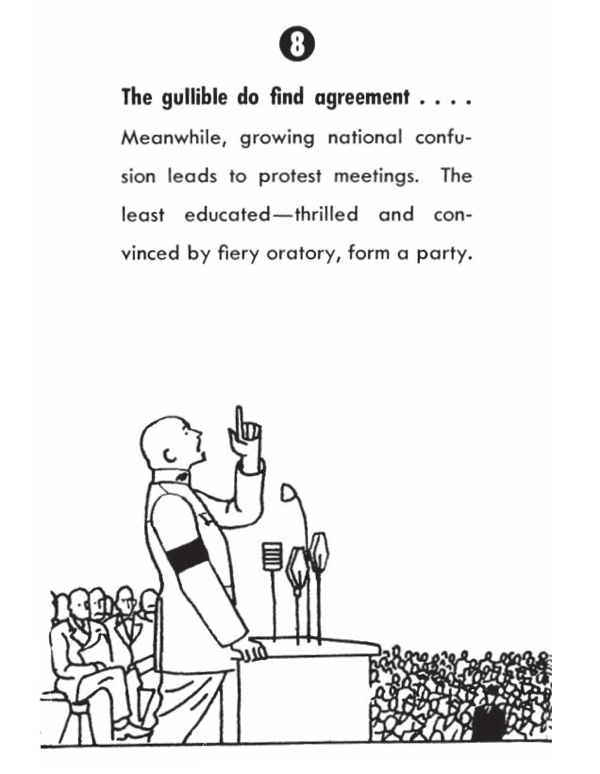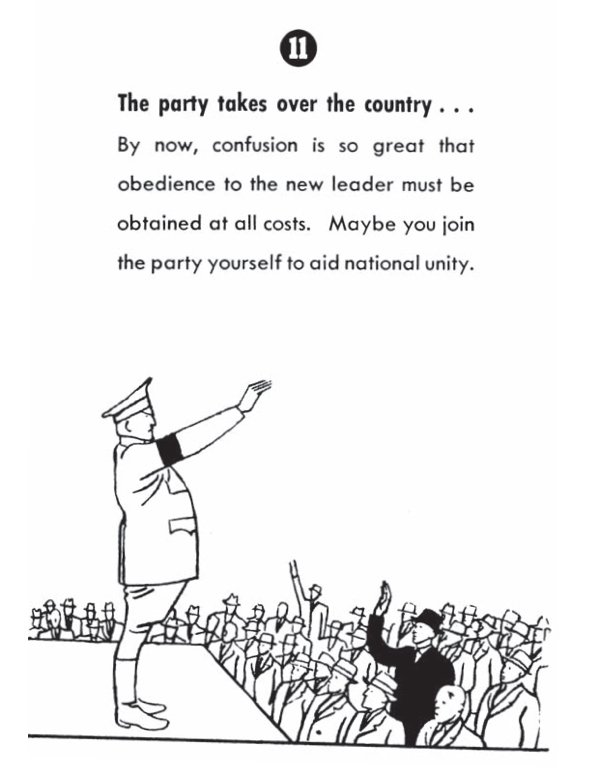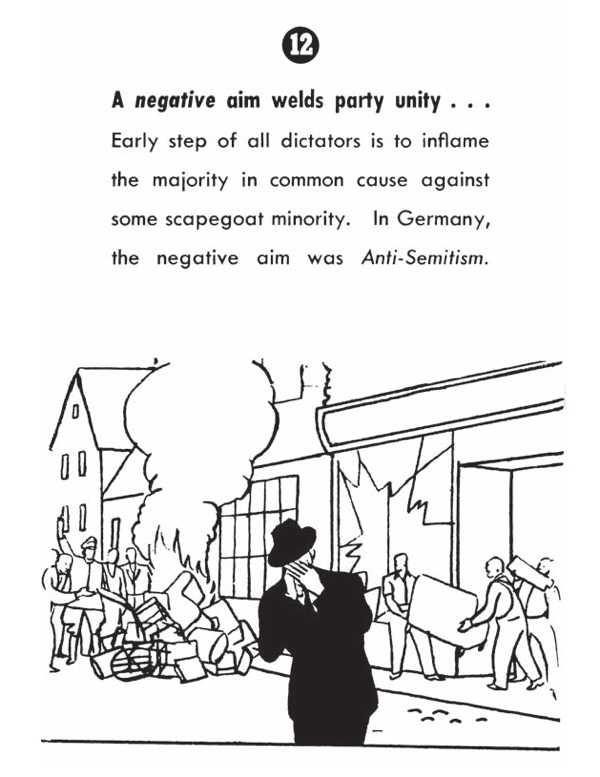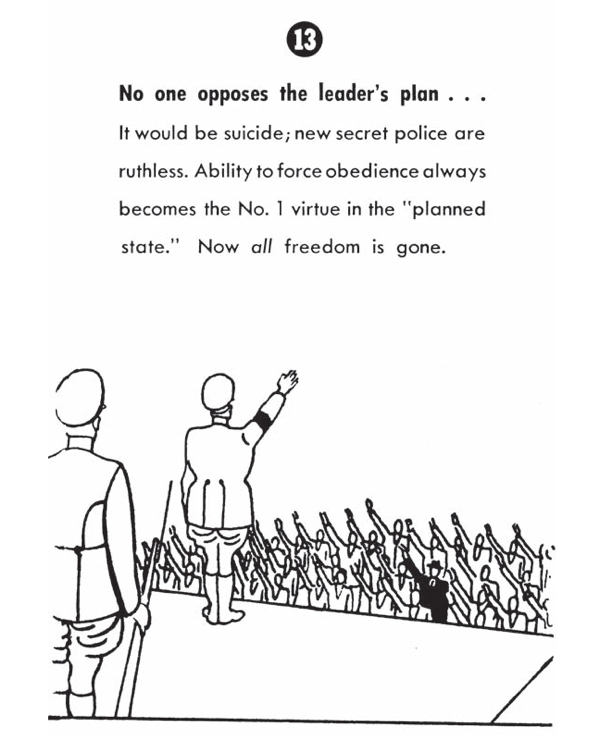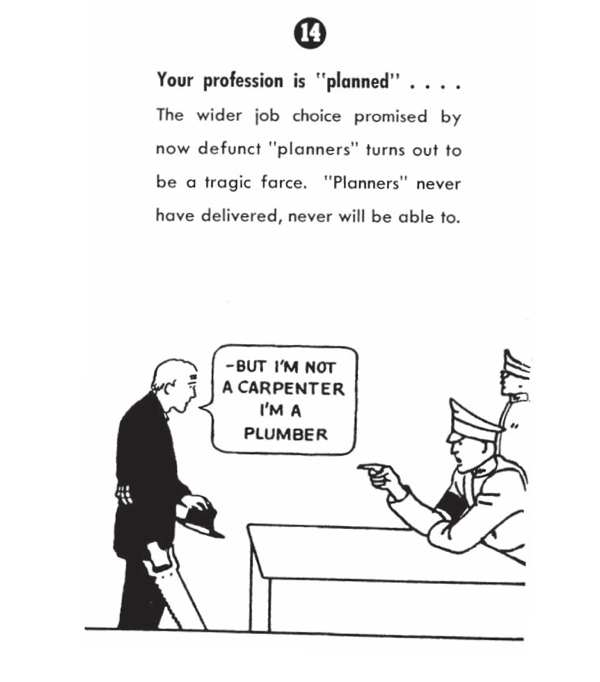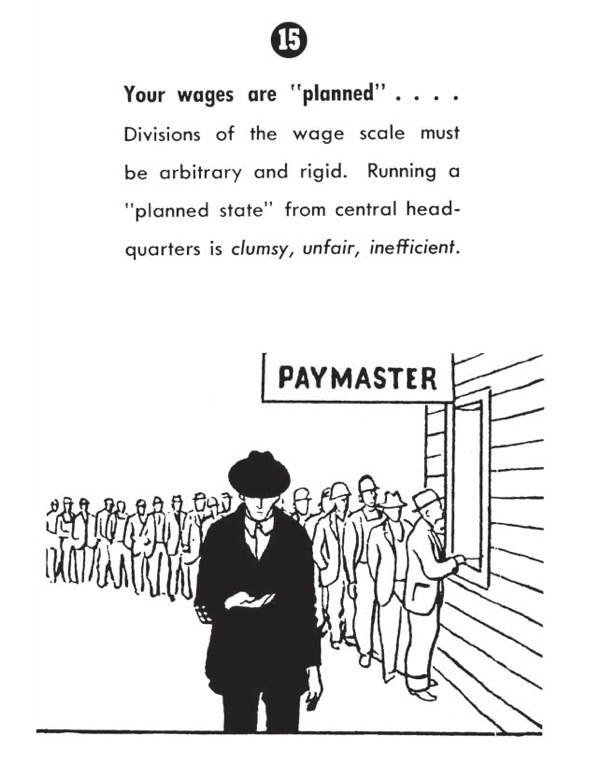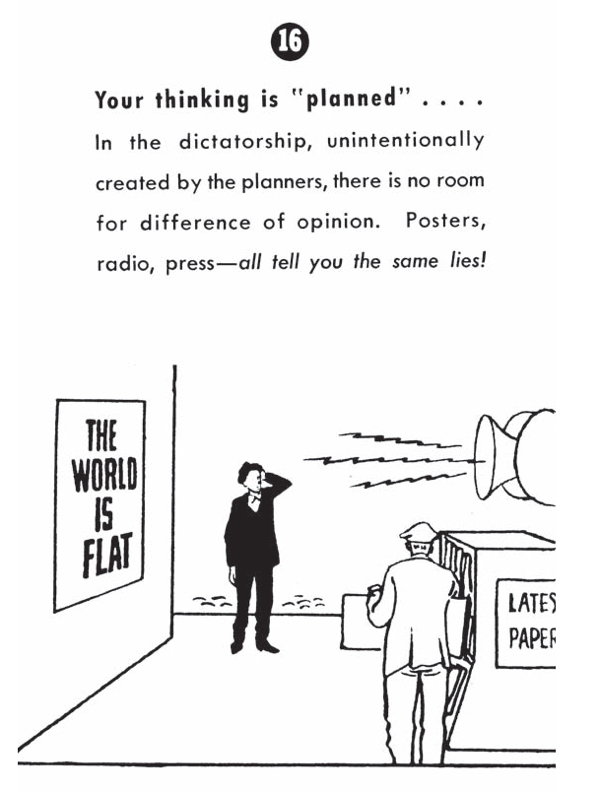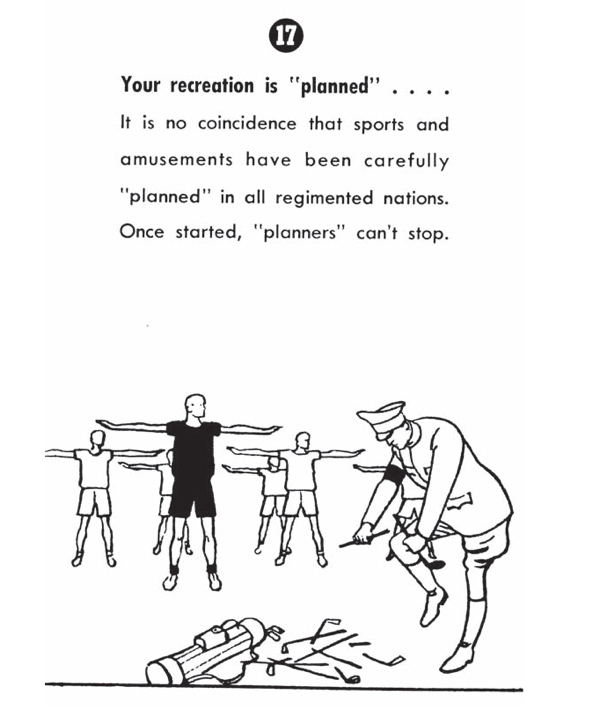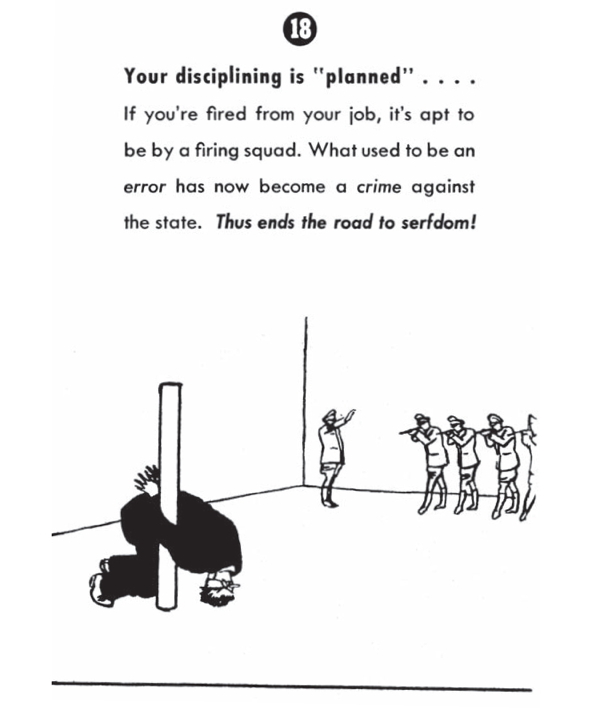
Hayek's Illustrated The Road to Serfdom (1945)

Source:
Friedrich A. Hayek, The Road to Serfdom with The Intellectuals and Socialism. The Condensed Version of The Road to Serfdom by F.A. Hayek as it appeared in the April 1945 edition of Reader's Digest (London: The Institute for Economic Affairs, 2005).
As a companion piece to FEE's condensed and illustrated version of Bastiat's The Law (1850, late 1940s) here is a condensed and illustrated version of Friedrich Hayek's The Road to Serfdom (1944). This is what Wikipedia has to say about this version: "A condensed version of the book written by Max Eastman was then published as the lead article in the April 1945 issue of Reader's Digest, with a press run of several million copies. This condensed version was then offered as a Book of the Month selection with a press run of over 600,000 copies. In February 1945 a picture-book version was published in Look magazine, later made into a pamphlet and distributed by General Motors." [Since General Motors has been the recipient of a massive government bailout by the Obama administration I'm not sure they would support Hayek's or Bastiat's views about the free market today and would probably disavow their affiliation with this edition today.]
The Institute for Economic Affairs in London produced a very nice edition which combines this and other versions into one book: Friedrich A. Hayek, The Road to Serfdom with The Intellectuals and Socialism. The Condensed Version of The Road to Serfdom by F.A. Hayek as it appeared in the April 1945 edition of Reader's Digest (London: The Institute for Economic Affairs, 2005).
As you can see from the illustrations the depiction of the "planners" draws from the historical example of the Nazi Party (arm bands and jack boots). If the illustrated version sere to be updated to the present the artist would no doubt draw the "planners" in business suits which is the uniform worn by the current generation of planners and regulators. The politicians and bureaucrats of today think that if they wear the uniform of the businessman and not the Gauleiter we won't notice the difference. Another major difference is the concluding illustration. In 1944-45 it might have seemed that the inevitable result of government planning of the economy would be the firing squad for any dissenters or rebels. We now know that this is rather overwrought. After 70 years of government planning, inflation, and growing debt we know that this is not necessary for the state to maintain its rule. The old Roman strategy of "bread and circuses" for the masses seems to work every time. We can and have been bought off repeatedly. The "serfdom" of the modern welfare/warfare state is a much softer kind of serfdom to that which existed under Nazism and Stalinism.
Here are the illustrations:
